A cathedral volunteer hopped up from her stand and bounded over to me.
-Bonjour! Vous saviez qu’il y a du jambon qui sèche dans cette cathédrale? (Hello! Did you know that there’s ham drying in this cathedral?)
I had definitely understood, yet my brain was floating around in cognitive disconnect. I recovered, sort of.
-Uh…..jambon…..?
Undeterred by my seemingly limited comprehension of French or, indeed, anything, she led me to a poster and started a rapid-fire pitch of this most unlikely combination: ham and a cathedral.
Photo credit: the Florus Solarium Facebook photo archives
“Well, I’m sure you know churches need money for upkeep, and donations are way down. A few years ago, we had a forward-thinking priest who thought we could use this space (arms waving upwards) to raise money. This initiative is unique in France! In fact in all of Europe!”
I loved this lady’s honesty and enthusiasm.
With profits from the bell-tower-dried-ham venture, the cathedral’s Baroque organ has been restored:
The woman was such a good salesperson that I headed straight to the souvenir stand, which is usually not on my cathedral to-do list. No rosaries and crucifixes here: ham dried on-site, honey extracted from beehives installed on the cathedral terraces, and chocolate from a convent in Aveyron were the big sellers.
I walked out, reflecting upon human ingenuity.
I have now been on a guided tour that got tense
On my trip to Cahors, I had had a magical experience visiting a library.
So when I saw that La Bibliothèque du Grand Séminaire de Saint-Flour was open for a once-a-week guided tour, I was all in.
According to the librarian/guide, the seminary building was doomed to demolition in 1905, but a “rich priest from Paris” bought it for the diocese, thus saving it from ruin.
Its library is home to over 150 16th-century volumes, plus a large collection of antique theology and law books.
The visit got off to a fine start. But my group asked some touchy questions.
Why are some books in a glass case?
The librarian explained that in the past, this was for books on “The Catholic Index” — in other words, forbidden or restricted — and gave Voltaire as an example.
Nobody reacted, yet she went on the defensive.
I don’t know what you think, but look at today! Young people have access to everything! So the glass case wasn’t such a bad idea, in my opinion!1
After an uneasy silence, we continued to wander about, listening to explanations about this book, that book and the other. It was revealed that only two (a year? ever?) researchers had worked there.
Which brought on another uncomfortable question:
This may be a delicate issue, in fact I’m quite sure it is, but why hang on to this fabulous collection of historical volumes…uh…here? Wouldn’t they be better off in a specialized library in a bigger city?
Oops.
Our guide clearly did not care for this one.
First, I would say that I haven’t spent 15 years of my career taking care of this place for the books to be sent off elsewhere!
I felt for her, but this argument lacked historical punch.
Second, I’d say that really, nobody wants these books. I’ve been in touch with libraries in Paris, in Lyon…it costs a fortune to restore even one volume.
Fair enough.
And also…these books belong here. What’s the world coming to if everything is just taken away from where it came from? Look at Le Musée de la Haute Auvergne here in Saint-Flour! They display religious statues that belong in churches in our little villages! I don’t know what you think, but in my opinion…
The visit ended shortly.
I walked out, reflecting upon where objects really belong.
The former seminary happened to be my hotel.
Its seminary days ended in 1959. The diocese was then faced with a dilemma: what to do with this remarkable building, constructed from 1752 to 1762, and already once saved from ruin.
Turning it into lodging was the solution, and currently the hotel is managed by an employee of the diocese.
The place felt a bit eerie:
My room was huge, making me wonder if it hadn’t served as a classroom. I could almost feel the ghosts of seminarians past hovered over their desks, reading books definitely not written by Voltaire.
The grounds were beautiful:
I would have loved to buy an early-evening glass of rosé and sip it right there, but sensed this might be frowned upon by the taciturn staff. I do know this wouldn’t be a sin, but I did still feel it would be wrong somehow.
I walked out reflecting upon where to find a lively café.
This ends my Saint-Flour series. The town is right off the A75 highway heading north to Clermont-Ferrand and definitely worth a stop, if only to visit the cathedral and admire the main buildings — although I happily occupied myself there for a day and a half.
I noticed a certain number of attractive restaurants, and was definitely pleased with 2 of my 3 meals — and no, I won’t be talking about the third one.
My next trip is in the works and will feature a significantly larger town.
But for now, I’m taking an August Substack break.
See you in September — à la rentrée!
The dialogue in this section may be approximate, but I took notes from memory after the visit and have made every effort to stay true to, and faithfully translate, what was actually said.

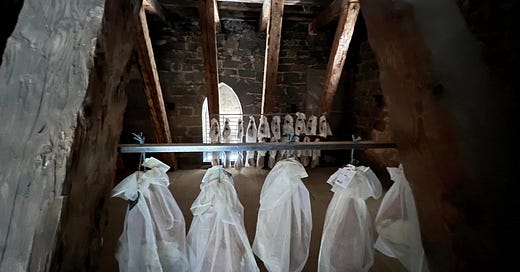



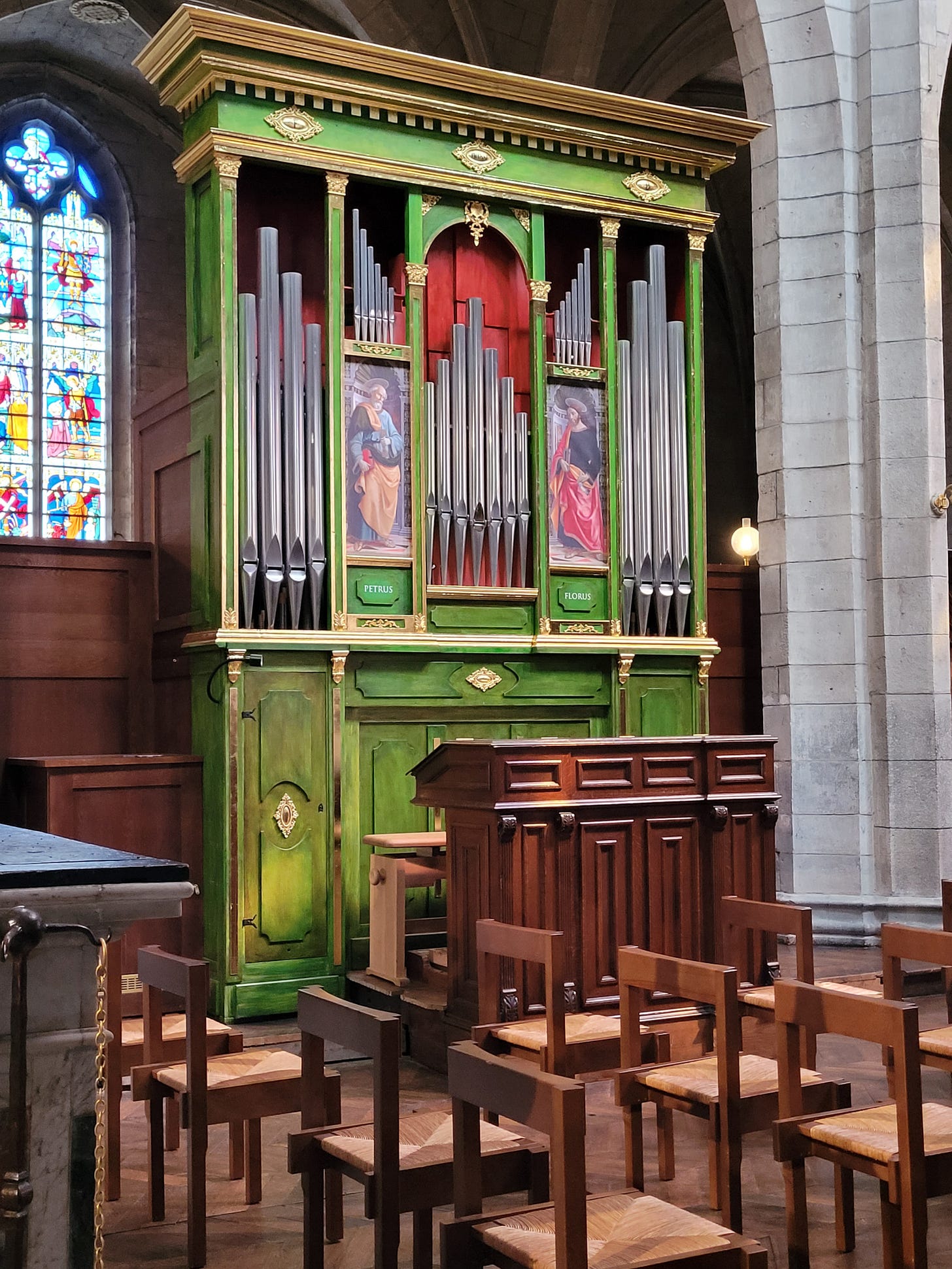
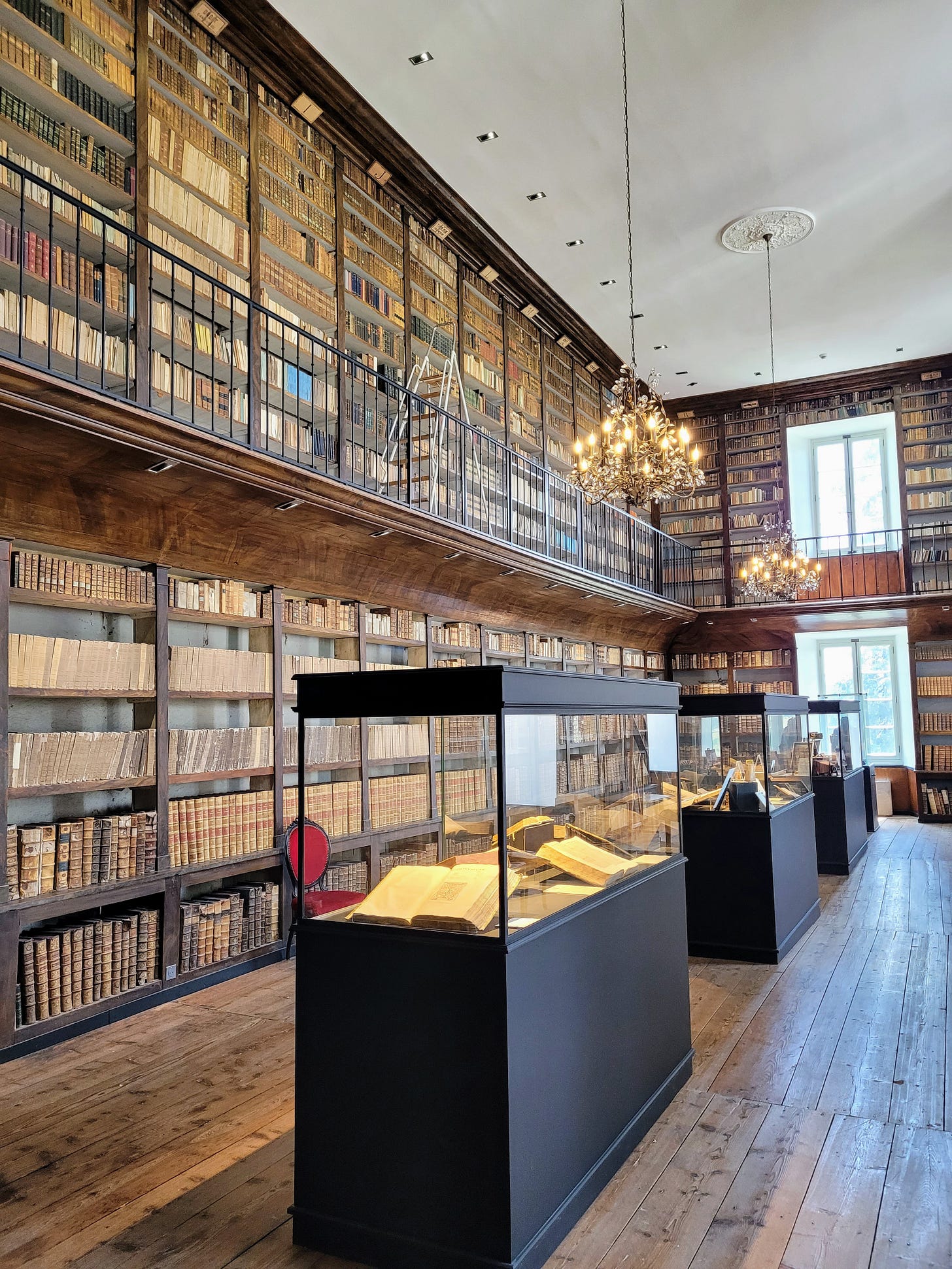

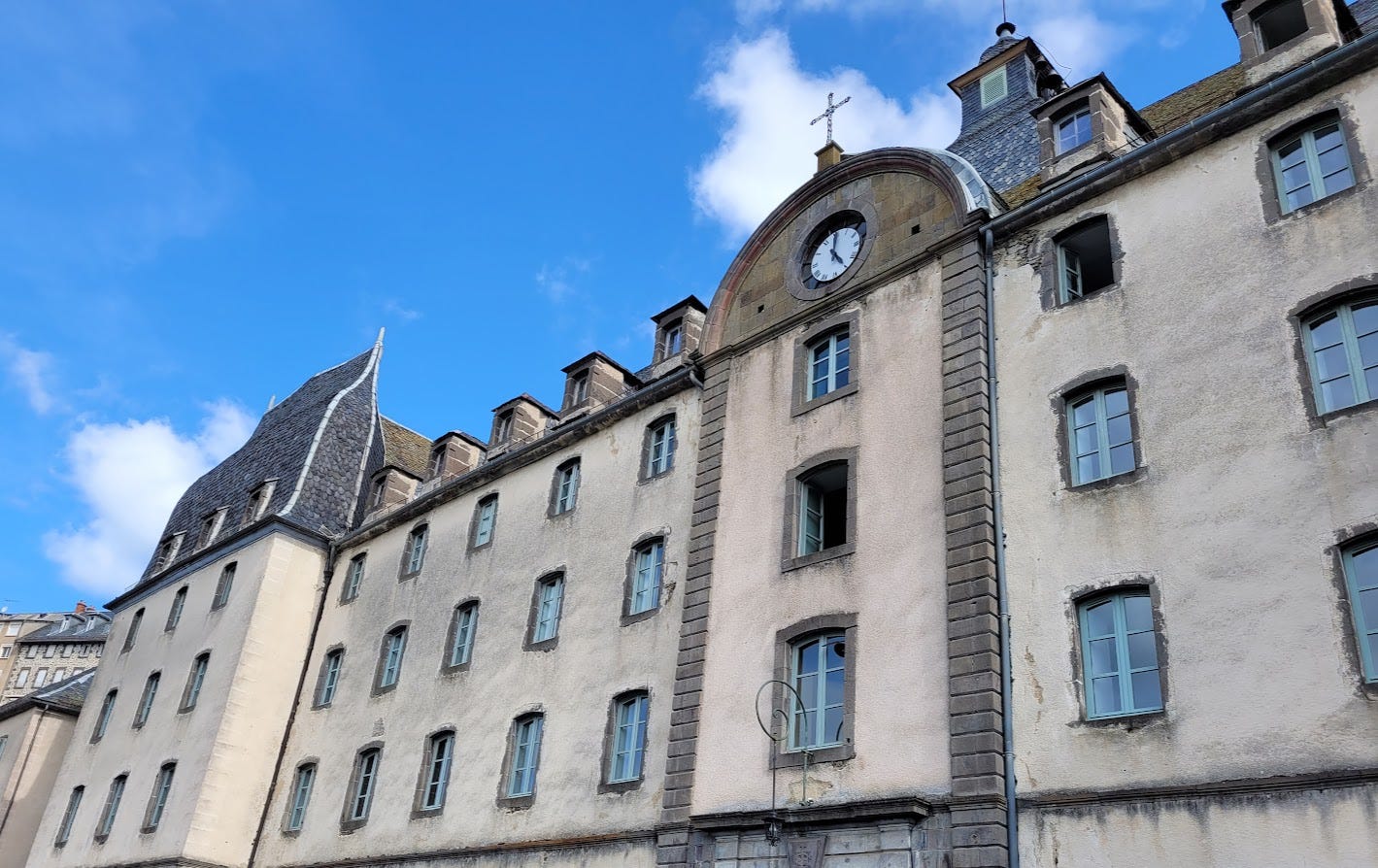
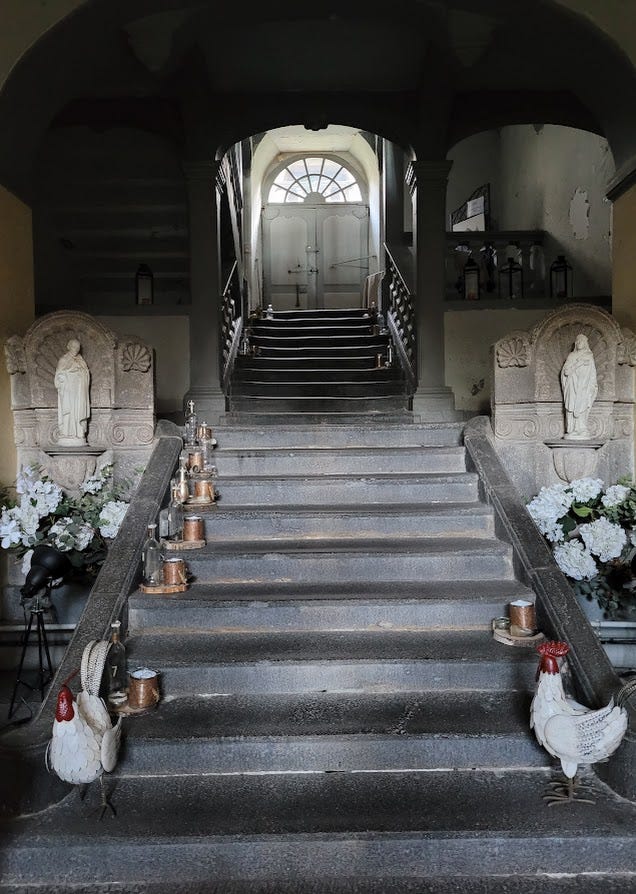
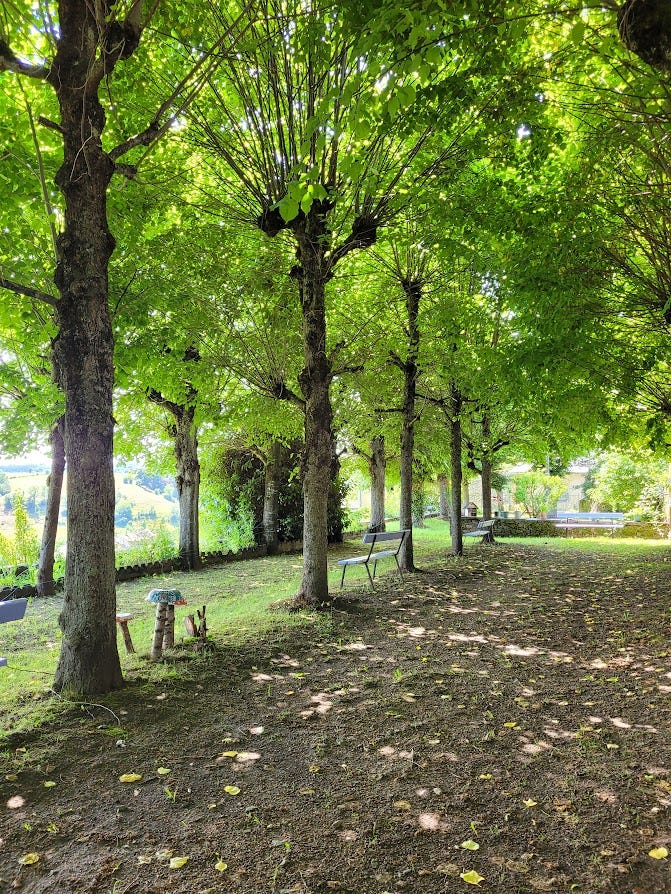
I'd happily sign up for a tour of under-visited historic libraries in the provinces. As for the seminary-turned-hotel, I'll definitely stay there if I ever get to St-Flour!
As always, an excellent read! The hams in the belfry - what a genius idea!!! And a money-maker to boot.
The conversation with the librarian was extremely entertaining. Obviously, there is a real sense of territoriality here!!! Oh, and the semi-creepy seminary/hotel. My uncle was director of the seminary in Lille, and that was a big place. After he became bishop of Annecy, he had to face monetary issues, and I think that one involved the seminary in that city. Seminaries, nowadays, must be quasi empty.
Can’t wait for September for your write ups on the next city. 😊